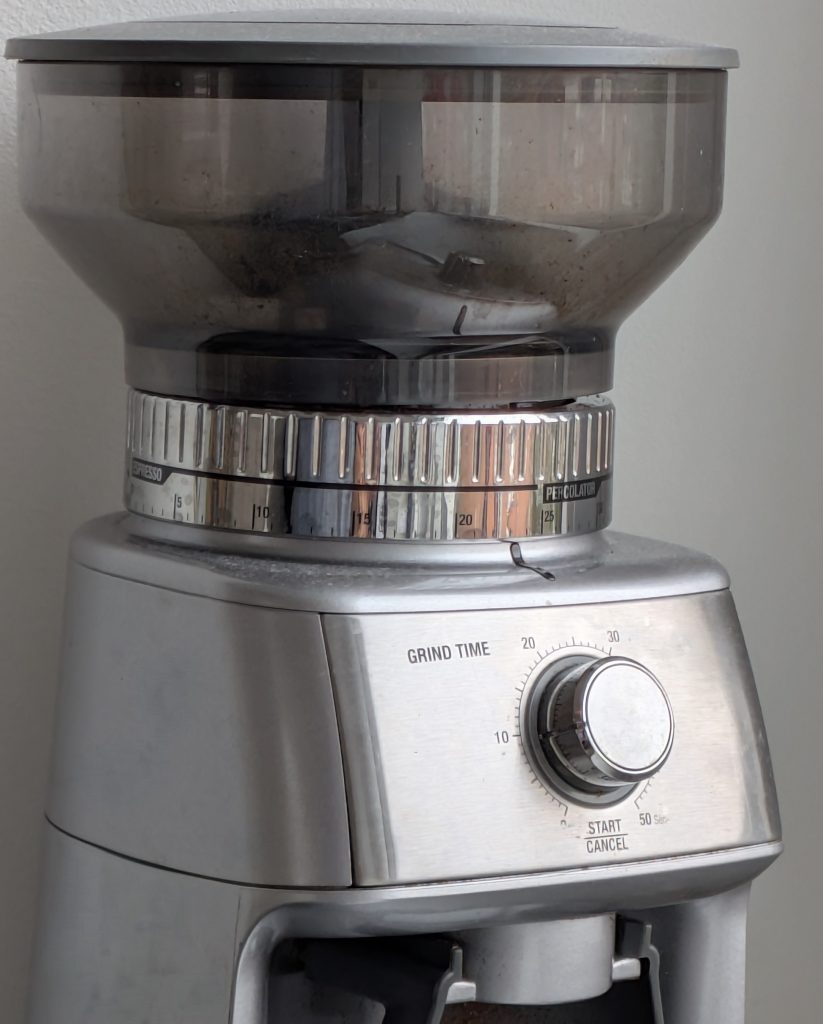Your basket is currently empty!
Coffee Grinder
What to Expect from Your Coffee Grinder
A good grinder is the unsung hero of any coffee setup, especially if you’re aiming to pull great espresso shots at home. Here in Amsterdam, many specialty roasters recommend focusing on your grinder before upgrading your espresso machine, and it’s not hard to see why. If you nail the grind, you’re halfway to a delicious cup.
In this article, we’ll talk about the two main parameters you can adjust on your coffee grinder—grind size and grind time—and how to balance them to achieve the right amount of coffee (known as your “coffee-in” or dose). We’ll also dive into how portafilter size plays a role and share some tips on consistent tamping pressure.

Grind Size & Time
The grind size determines how coarse or fine your coffee grounds will be. The finer the grind, the slower the water will pass through the coffee puck during extraction, and vice versa. Meanwhile, the grind time (if your grinder is time-based) directly affects how many grams of coffee you end up with in your portafilter.
- Grind Size: If you make the grind coarser, you’re likely to get more grams of coffee in the same amount of time, because the beans pass through the burrs more quickly. Conversely, a finer setting slows the flow, so you’ll likely get fewer grams in the same time.
- Grinding Time: If your grinder allows you to set the duration (e.g., 10 seconds, 15 seconds, etc.), increasing that time means you’ll get more ground coffee. Reducing the time means fewer grams.
Finding the perfect dose (your "coffee-in") is a balancing act between these two factors. If you need more coffee in your portafilter, you can set the grind coarser or extend the time—or both.
Balancing the parameters
Here’s a simple approach to get started:
- Choose a Starting Dose: For espresso, many people target around 18 grams in the portafilter (though it can vary from 14g to 22g, depending on your preference and basket size).
- Set Grind Time: Adjust your grinder’s timer so that it dispenses something close to your target dose. Weigh it on a scale to be sure.
- Fine-Tune Grind Size: If you need a bit more coffee in the basket but don’t want to adjust the timer too much, try going slightly coarser. If you’re overshooting your dose, go slightly finer.
- Taste Test: Pull a shot, taste it, and note if it’s over- or under-extracted. Finer grinds tend to slow extraction (and can lead to over-extraction if you’re not careful), while coarser grinds speed it up (risking under-extraction).
Repeat these steps until you find a sweet spot that works for both your taste and your espresso machine settings.
Kruve Sifter Six
…
Grinder Calibration
…
Final thoughts
Your grinder is arguably the most important piece of equipment in your espresso setup. By understanding and balancing grind size and grind time , you can dial in the exact dose you need to achieve a delicious shot. Remember to consider your portafilter size, keep your tamp pressure consistent, and—most importantly—adjust your approach based on flavor.
If you’re just starting out, take it one step at a time. Begin with a simple dose, experiment with minor adjustments, and see how each change affects the taste. With a bit of practice (and maybe a few extra espresso shots along the way), you’ll soon be dialing in your coffee like a pro—ready to enjoy everything the Amsterdam specialty coffee scene has to offer!
Happy grinding, and cheers from Grachten Beans!
